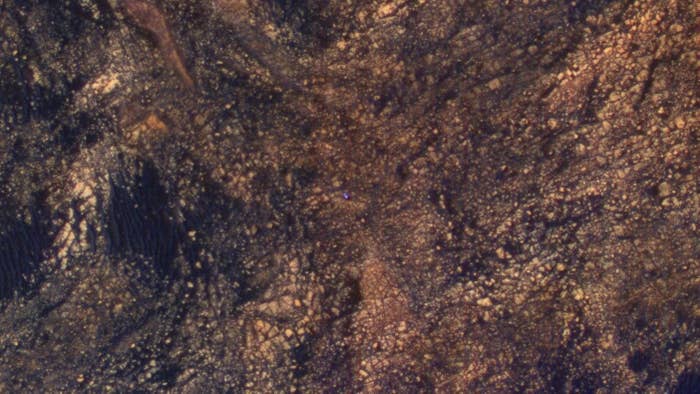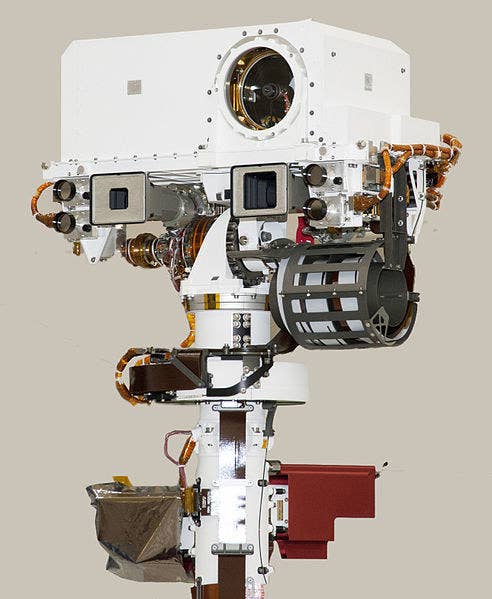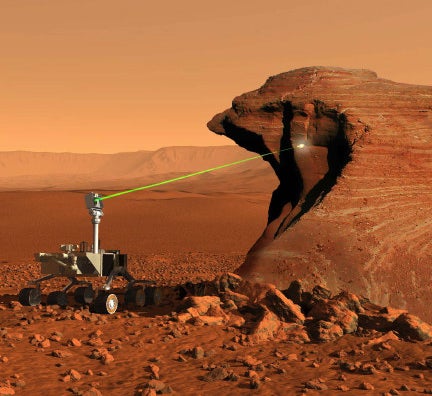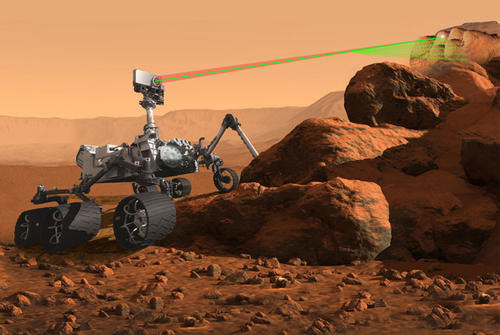As you may know, NASA's Curiosity rover has been trundling around Mars since it landed on the red planet in 2012.
Heads up! No, really. My head's up. Mast deploy successful. I'm looking around, taking Navcam images #MSL
Curiosity is part of the Mars Science Laboratory mission. Its task is to investigate the climate and geology of Mars, including looking for signs that it could ever have supported some form of life.
Curiosity landed in the Gale Crater and then headed to the base of Mount Sharp a few miles away, before traveling up the mountain, stopping to investigate scientifically interesting places along the route.

You may also know that Curiosity can shoot lasers at rocks to work out what they're made of.

But what you might not know is that, since May last year, Curiosity has been making its own decisions about where to point that laser.
Cue the Pink Floyd. It's a laser show on Mars. Watch me zap this rock. #pewpew http://t.co/SgFcpGVyoJ
And in a paper out today in the journal Science Robotics, NASA scientists say Curiosity's self-directed lasering has been working out really well.
They wanted ChemCam to shoot at a particular kind of rock, "light-toned rock outcrop as opposed to loose rocks or soil," Dr Raymond Francis, a scientist at NASA's Jet Propulsion Lab in Pasadena, California, told BuzzFeed News – and it's managed to do that 93% of the time.
Because Mars is so far away, communicating between Curiosity and mission control on Earth can really slow things down.
Imagine sending a three-day plan up to the rover on a Friday to cover that day and the weekend, said Francis. Curiosity would drive to the location scientists wanted it to go to, take a bunch of images to show where it was, transmit them back to Earth – and then wait. If the images came in to mission control over the weekend, the rover would have to wait until Monday morning, when the science team is back in work, for them to look at the images, decide where to laser, and send back a message telling it what to do.
So giving Curiosity the power to decide for itself has helped speed things up, allowing it to do science it wouldn't have managed to fit in before.

Before this new software was uploaded to it last year, Curiosity used to do something called blind-targeting – which, as you can probably guess, means shooting the laser in any old direction and hoping for the best.
🤔 I would have said "science." #FirstGifComesUpForYourName
"Time on Mars is so valuable that they would just fire blindly," said Francis. "They would point the laser at a specific angle to the rover, usually to the right and down low, and hit whatever was there, and they wouldn't know what it was until after the measurement came back."
It's not the first time Curiosity has been given some autonomy.
It already knows how to turn on its heaters if it gets too cold, and when it's navigating the Martian terrain, scientists can tell it where to go and it will avoid big rocks along the way.
The new software has been so successful on Curiosity that NASA already plans to use it on the next Mars rover, which will launch in 2020.

And in the future, as we send spacecraft to planets even further away in the solar system, it's going to be even more useful to have them decide some things by themselves.
"We're learning that sometimes giving the system onboard intelligence makes it a better tool for the humans on Earth," said Francis. 🚀
